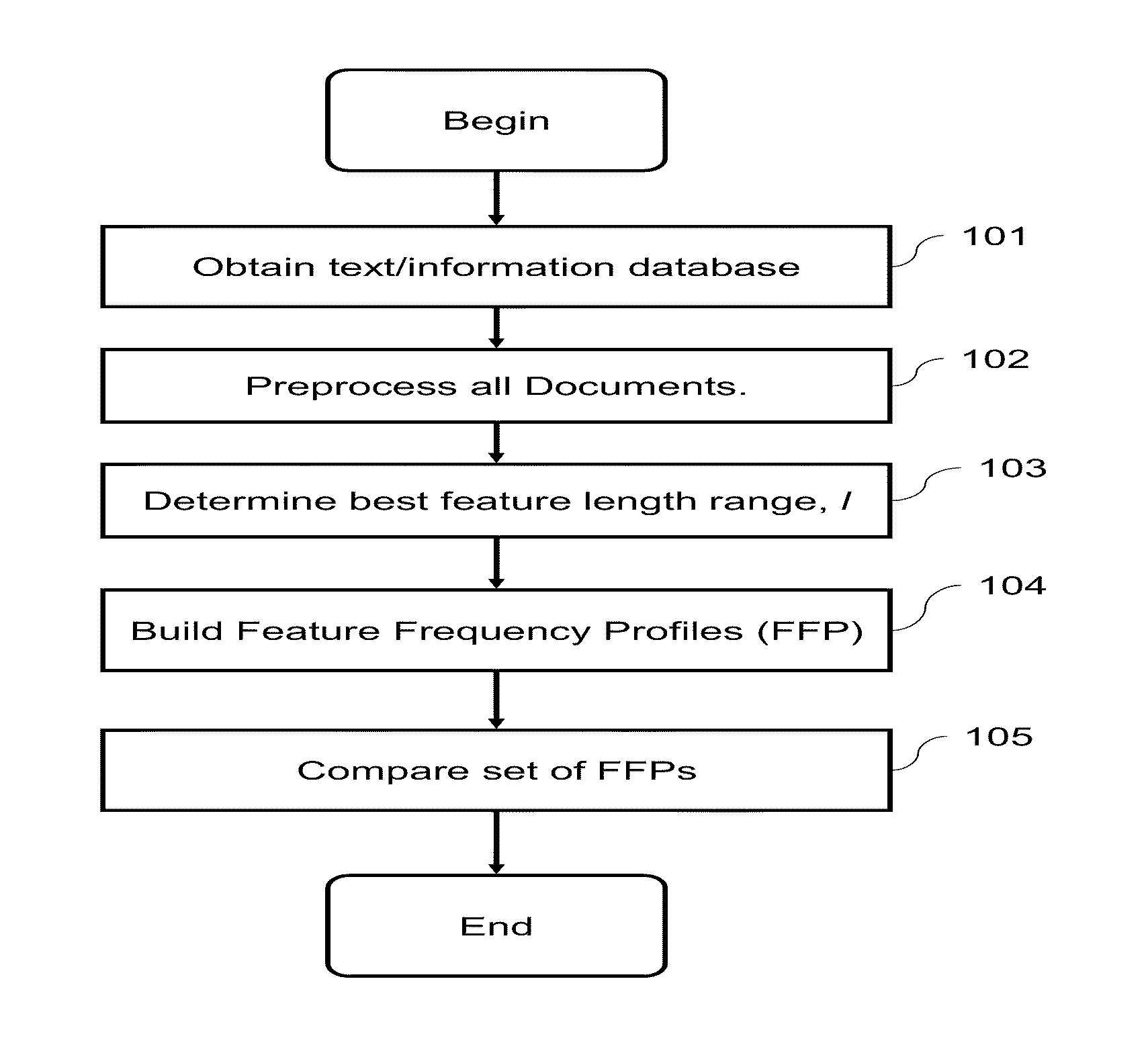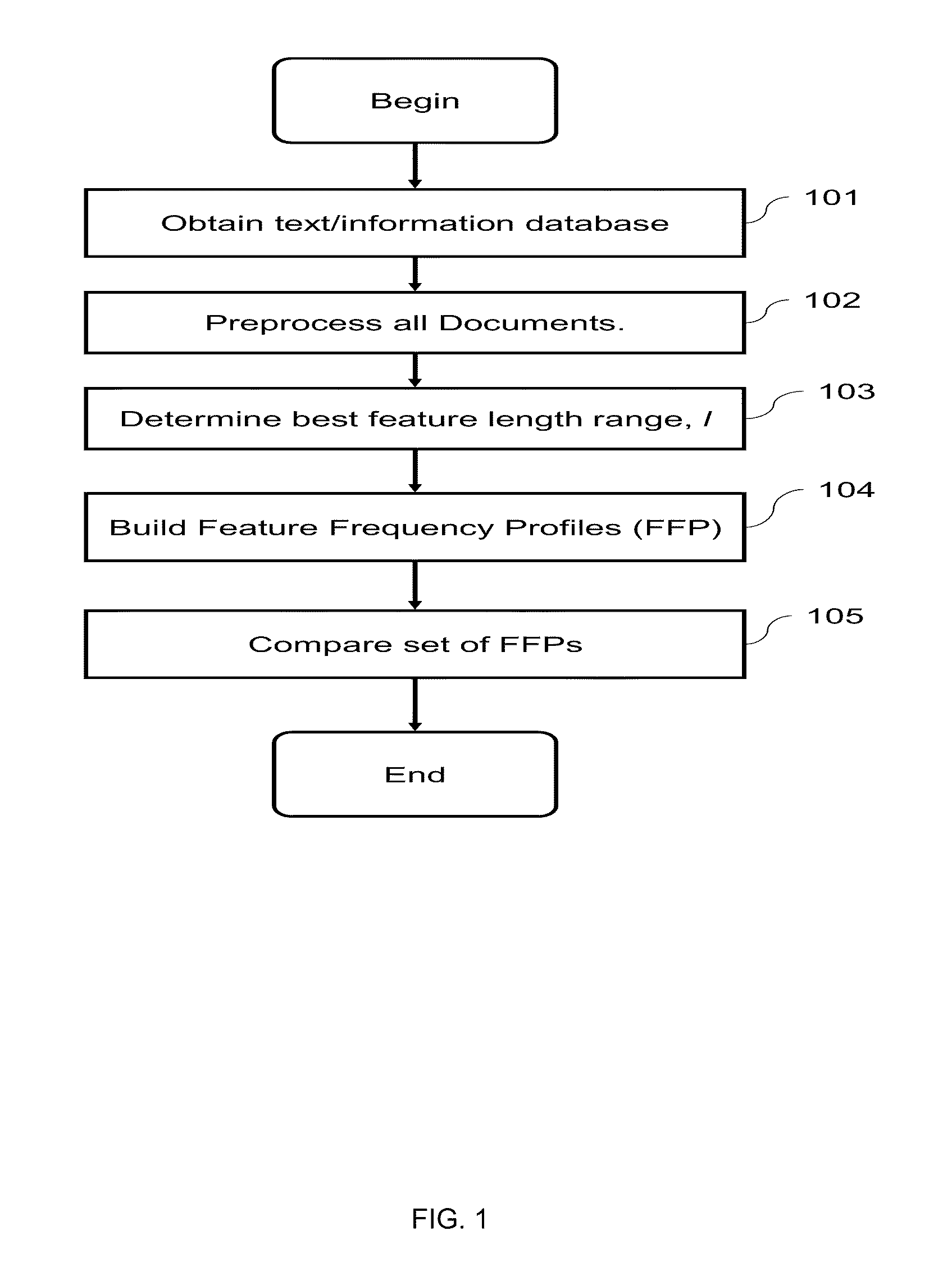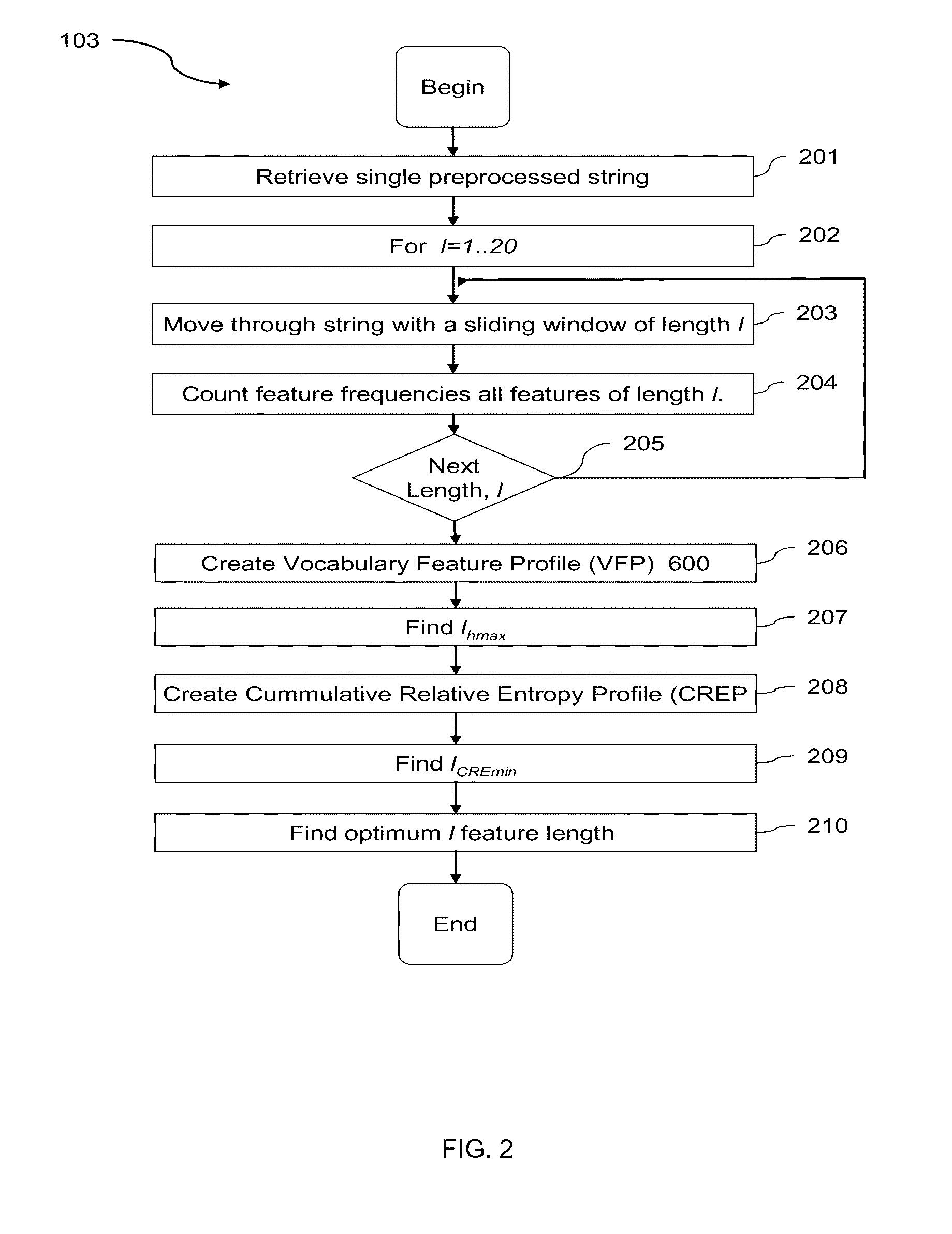Computational Method for Comparing, Classifying, Indexing, and Cataloging of Electronically Stored Linear Information
a linear information and computation method technology, applied in computing, instruments, electric digital data processing, etc., can solve the problem that the syntax and context of the similarities of keyword usage between two comparisons cannot be captured, and the similarity of keyword usage is not captured. the effect of high frequency
- Summary
- Abstract
- Description
- Claims
- Application Information
AI Technical Summary
Benefits of technology
Problems solved by technology
Method used
Image
Examples
example 1
Whole Genome Comparison of Placental Mammals, Using Feature Frequency Profiles (FFP), an Alignment-Free Method
[0082]The present whole genome comparison of placental mammals, using feature frequency profiles (FFP), an alignment-free method is further described herein below.
[0083]The comparison of two closely related genomes at the base-by-base nucleotide sequence level can be routinely accomplished by traditional sequence alignment. However, as species diverge over time, genomic rearrangements, such as gene transposition, deletion and duplication make sequence alignment impractical. An alignment free method, such as the scheme presented here, can be used to overcome these issues associated with genome comparison. The FFP alignment-free method can compare genomes in their entirety at the nucleotide level in both the genic and non-genic regions. This method divides sequences into overlapping ‘words’ or l-mers of a given length or resolution, l. Then, two genomes are compared based on t...
example 2
Whole Proteome Phylogeny of Large dsDNA Virus Families by an Alignment-Free Method
[0132]Phylogenetic and taxonomic studies of viruses have become increasingly important as more and more whole viral genomes are sequenced (1-4). Knowledge of viral taxonomy and phylogeny is not only useful for understanding the diversity and evolution of viruses not only within a viral family, but also among different viral families that may have a common origin (5). They also provide useful information in drug design against virally induced diseases (6).
[0133]One of the unusual aspects of viral genomes is that they exhibit high sequence divergence due to high mutation rate, genetic recombination, re-assortment, horizontal gene transfer (HGT), gene duplication, and gene gain / loss (7, 8). A direct consequence of the high sequence divergence and relatively small number of genes in viruses is that the number of highly conserved genes among different viral families is very small or, sometimes, undetectabl...
PUM
 Login to View More
Login to View More Abstract
Description
Claims
Application Information
 Login to View More
Login to View More - R&D
- Intellectual Property
- Life Sciences
- Materials
- Tech Scout
- Unparalleled Data Quality
- Higher Quality Content
- 60% Fewer Hallucinations
Browse by: Latest US Patents, China's latest patents, Technical Efficacy Thesaurus, Application Domain, Technology Topic, Popular Technical Reports.
© 2025 PatSnap. All rights reserved.Legal|Privacy policy|Modern Slavery Act Transparency Statement|Sitemap|About US| Contact US: help@patsnap.com



